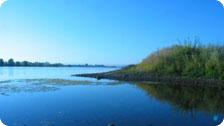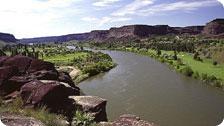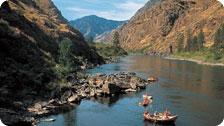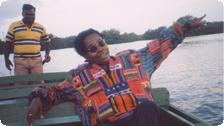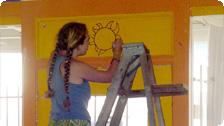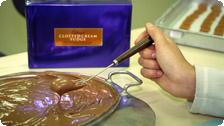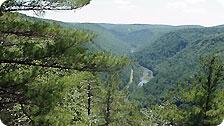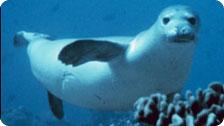Wellness: Oregon, USA: Cruising the Columbia, A Corps of Discovery
by Gigi Ragland
Undaunted Courage, by Stephen Ambrose, chronicles the heroic overland expedition of Lewis and Clark. These adventurous men and their thirty-one member party, dubbed the Corps of Discovery, journeyed westward from St. Louis in search of an all-water route to the Pacific. Of particular interest to me was the Corp’s encounter with the mighty Columbia River towards the end of their journey.
Weeks before I departed on Glacier Bay Cruiseline’s inaugural Columbia River cruise and kayaking expedition – which included stops in many of the same places the Corps of Discovery explored two centuries ago – I began planning for my own “Corps of Discovery.”
In addition to reading Ambrose’s book, I lifted free weights to condition my arms in preparation for the tandem kayaking I would be doing on the expedition. Accompanying me on the cruise would be my friend, a former UC Berkeley crewmember. Needless to say, her rower’s arms were in great shape to take on the challenges of any water odyssey – and a novice kayaker like me.
Yet while I typically recommend researching or preparing for soft-adventure trips, Glacier Bay Cruiselines offer everything you need on your adventure. Undaunted Courage and other great books on the Pacific Northwest were available to read in the boat’s well-equipped library, and the ship offered lessons for all levels of kayakers. The knowledgeable, friendly crew carefully prepared us for each day’s kayaking excursion.
Our seven-night, roundtrip cruise on the eighty-seven-passenger Wilderness Discoverer began and ended in Portland, Oregon and navigated the scenic Columbia and Snake rivers – a voyage of nearly 1,000 miles. Activities included a jet-boat ride through Hell’s Canyon along the Snake River (known as the “Jurassic Park of Geology”), a rafting trip along Washington’s White Salmon River, hiking, and an optional scenic train ride on the Mount Hood Railroad.
The ultra-casual atmosphere on the boat made it easy to relax and concentrate on the real entertainment of the cruise: kayaking and the diverse natural surrounding’s wildlife. Our kayaking excursions were no more than a few hours at any given location. Miller Island, our first kayaking stop, was delightfully calm, and easy to paddle – we spotted petroglyphs and pictographs on the stone cliffs fronting the water.
Upon reaching the mouth of the Palouse River, we were rewarded with stunning copper canyon views casting an amber glow on the river, especially beautiful in the late afternoon sun. We were as excited as kids when we followed a splash in the river and saw an otter making its way to the shoreline.
Our outings produced numerous wildlife sightings: bald eagles nesting, white pelicans, salmon, prairie falcon, blue herons, California sea lions, big-horned sheep, llama, osprey…One passenger even claimed he spotted the Loch Ness Monster! (That one must have occurred during cocktail hour.)
As we cruised the depths of the Columbia River Gorge, a misty rain fell, and a few intrepid travelers watched the waterfalls from the observation deck, christening those that had no names – Leaky Faucet Falls, Whisper Falls, Roger Falls.
Our cruise took us through the eight lock passages within each dam system of the Columbia River. At the John Day Lock, one of the onboard naturalists explained our transit step-by-step through the lock. The boat entered a huge metal and concrete chamber; the guillotine-like, massive metal door snapped shut behind the boat, and the container filled with thousands and thousands of gallons of water, lifting the ship upwards. The ship floated like a cork to the top of the chamber, about 150 feet up, with the gate ahead lowering just enough to allow passage onto the next section of the river.
Obviously, Lewis and Clark never encountered a dam passage through the Columbia or Snake rivers. Even the native inhabitants believed many of the falls to be impassible. According to contemporary ranking systems, the falls would have been considered Class V – hardly something to attempt by dugout canoe.
But Lewis and Clarke courageously made it through many of the most treacherous falls, capturing the locals’ admiration. In Undaunted Courage, Clark is quoted as stating that he was appalled by “the horrid appearance of this agitated gut swelling water, boiling and whirling in every direction.”
Although a series of dams have tamed the river that once teemed with falls, and the salmon that once spilled over in abundance are much depleted, there is still a raw quality to the land along the Columbia. With several naturalists on board, we were treated each night to a talk on a certain aspect of the river system, from the lifecycle of Chinook salmon and the exploits of Lewis and Clark to the geological formations created by the Missoula flood.
As the Wilderness Discoverer steered her way to our last stop, where the river meets the ocean in Astoria, Oregon, I was reminded of Captian Clark’s description of the junction: “Great joy in camp we are in view of the Ocian, this great Pacific Ocean which we been so long anxious to see.”
Clarke’s journal entry reads he had traveled “4,142 miles from the mouth of Missouri [River].” Although our journey was only 1,000 miles from Portland to Idaho and back, we too made many discoveries and encountered countless wondrous sights along the riverfront in the beautiful Pacific Northwest.
Everything you need for Portland OR Campingfrom Yahoo Travel, Frommers, Fodors, etc. all in one place
Discover more from Tango Diva
Subscribe to get the latest posts sent to your email.
